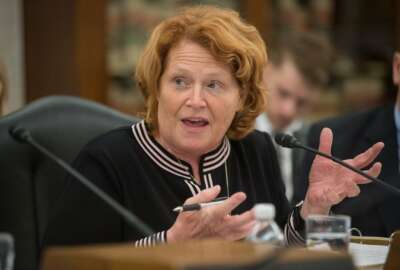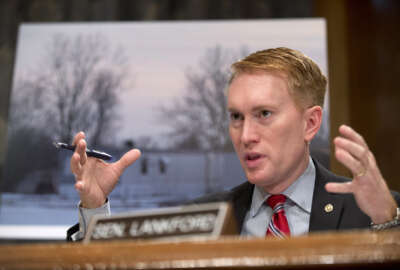
Time is now to reimagine the civil service, federal experts say
In a new white paper from the National Academy of Public Administration, federal experts say a breakdown of the federal human capital system ultimately led to some...
While agencies might point to a lack of resources or problematic IT, federal experts say a breakdown of the federal human capital system is the driving factor behind some of government’s most high-profile and controversial problems in recent years.
The National Academy of Public Administration points to government’s inability to recruit, hire, retain, pay and reward top employees as the root cause behind cybersecurity breaches at the Office of Personnel Management and health personnel shortages at the Veterans Affairs Department.
There’s no shortage of opinions and reports on the civil service, but NAPA said those challenges prompted the organization to look at the civil service with a particular urgency.
In “No Time to Wait: Building a Public Service for the 21st Century,” NAPA describes a series of broad principles that it said should prompt the next round of conversations about the future of the civil service.
NAPA’s report comes as the Civil Service Reform Act nears its 40th birthday. That law is beginning to show its age, said Dan Blair, former acting director and deputy director of OPM.
“It looks older than your typical 40-year-old,” he said. “It’s really showing its age, probably not in a good way. It’s had a mid-level crisis now for at least 20 years.”
With that in mind, NAPA suggests the time is well overdue to update the concept of “merit” for the 21st century. The organization focused its report on agency missions, broad merit principles and accountability.
“It includes, among others things, ensuring fair and equitable treatment of all employees, regardless of level,” said Don Kettl, a professor at the University of Maryland School of Public Policy. “It requires protection against arbitrary action. It ensures the importance of non-partisan service along the way. But more than anything else, it’s a re-commitment to idea that merit matters. It’s more than, as I was talking to a chief human capital officer a few weeks ago who was saying, ‘When I think of merit, I just think of veterans preference.'”
The civil service should be federated, one that recognizes individual missions and lets agency managers create the mechanisms they need to recruit, retain and train the right talent with the right skills in the right places, NAPA said.
Currently, too many agencies have been trying to break free from the confines of the civil service system and are vying for their own personnel flexibilities, NAPA said.
VA, for example, is the latest agency to receive its own authorities to hire and fire its employees.
“Who has figured out how best to hire accountants? Who has best figured out how to hire people in law enforcement?” Kettl said. “Some agencies are doing better than others. We’ve accepted that as a premise. It would be nice to know who it is and why, and what it is that best makes the system work.”
One central entity should collect best management practices from individual agencies and help them understand how they can borrow tools from other departments and apply pieces of them to their workforce, NAPA said. That entity should create the general “guardrails” where the civil service system operates, with flexibility in the middle for each agency and their mission.
Unanswered questions
NAPA hopes the report will steer future conversations among the new OPM director, interested members of Congress and civil service experts like themselves.
But as the NAPA contributors acknowledged, there are still plenty of unanswered questions. Who should lead such a substantive effort to reimagine the civil service? And should government take small steps or giant leaps to get there?
“The old conversations and the old ways will get us nowhere,” Kettl said. “The only way we’re going to get anywhere on this from legislative change to anything else, is to change the conversation, to find new doors to enter and to find sneaky new doors to try to provoke it. It’s one thing to say, ‘How are we going to reorganize OPM?’ Then the fireworks start. On the other hand, ‘How can I be more like NASA?’ [That’s] a completely different kind of thing. … We need to find a way to shift the conversation in way that helps us to escape all of the landmines that we know are out there.”
Many agreed that OPM needs to play a greater — or at least a different — role in these conversations. It should be a strategic partner to help agencies borrow techniques that other departments have found helpful in hiring, training and rewarding its employees.
“Is OPM set up for that? Does it have the capacity? If it doesn’t have the capacity, where do we go from there? Do we form a new entity? Do we create a new entity out of that framework?” Blair said. “Some have suggested a greater role for OMB. I don’t think [the Office of Management and Budget] has the capacity, as it’s currently situated. I’m a little nervous about having a distinct role for a White House agency, because of the threat of politicization.”
Blair pointed to the Obama administration’s efforts to change the Senior Executive Service as an activity that received more political attention as the White House developed its new executive order in 2015.
Congress will certainly play a role as well. Blair praised the care that leadership on the Senate Homeland Security and Governmental Affairs Subcommittee on Regulatory Affairs and Federal Management is devoting to the civil service. Subcommittee Chairman James Lankford (R-Okla.) and Ranking Member Heidi Heitkamp (D-N.D.) are holding a series of listening sessions and fact-finding hearings on federal personnel, hiring, performance management and other topics.
But Blair said he hasn’t seen the same level of interest from members in the House, particularly now that former Rep. Jason Chaffetz (R-Utah) has left the Oversight and Government Reform Committee and resigned from Congress.
“I haven’t seen an appetite yet from Chairman [Trey] Gowdy (R-S.C.) to take on something like this,” Blair said.
Copyright © 2025 Federal News Network. All rights reserved. This website is not intended for users located within the European Economic Area.
Nicole Ogrysko is a reporter for Federal News Network focusing on the federal workforce and federal pay and benefits.
Follow @nogryskoWFED
Related Stories






